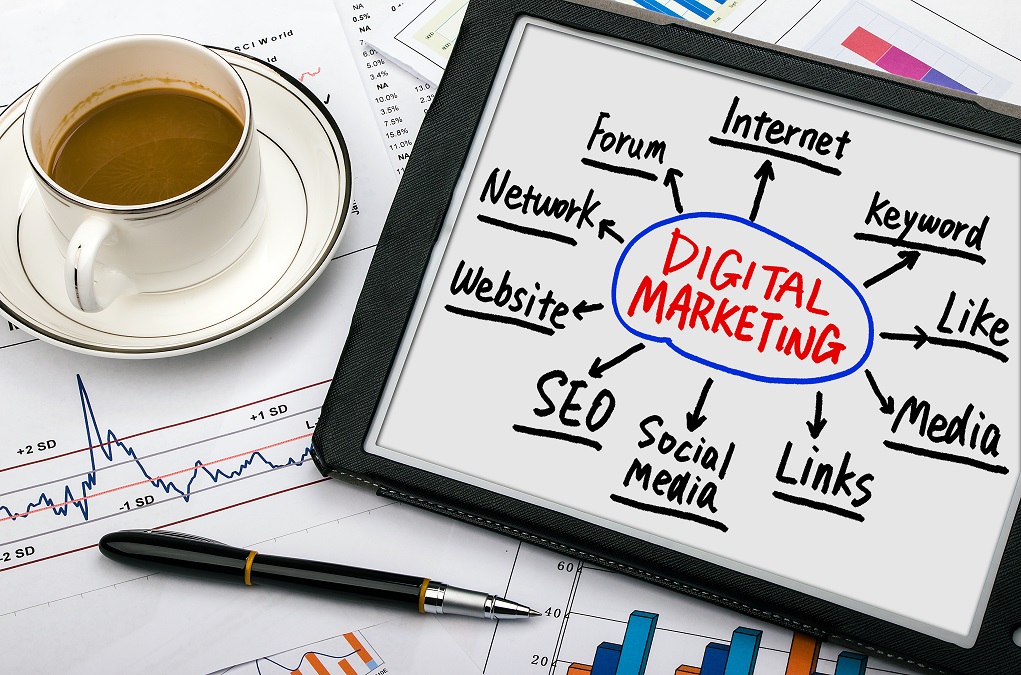Digital marketing is a term that is used frequently these days when people describe different types of marketing campaigns. While the term may seem familiar to many people, they still may not have a very strong grasp of what it means. The goal of marketing has always been to find your target audience at the right place and the right time. Nowadays, one of the best ways to reach consumers is through the internet. Essentially, digital marketing is any kind of marketing that occurs online.
Believe it or not, the amount of people who go online daily is still on the rise. Indeed, internet usage among adults rose by 5% in just the past three years, according to Pew Research. As a result, the way people look for and make purchases continues to evolve. Consequently, digital marketing has become even more prominent as traditional forms of marketing become less effective.
One of the reasons that digital marketing is successful is that it offers multiple channels for businesses to reach out to customers. They can take advantage of social media, search engines, email, and online ads among others to connect with target audiences.
Why Is Digital Marketing So Important?
Your business needs to have a strong online presence in today’s marketplace to generate any kind of brand awareness. In fact, it’s almost impossible to find a brand that doesn’t have its own website. And if it doesn’t, it will still be active on social media. In fact, digital marketing has become so integral to businesses that consumers depend on it to get information about brands.
Digital marketing is meaningful because it helps companies reach a much bigger audience than they could previously with traditional methods. Moreover, it enables brands to target those consumers who are most likely to purchase their goods or services. Not only is it more cost-effective than traditional advertising, but it also allows brands to measure the success of their campaigns daily and change course if necessary.
What are Some Types of Digital Marketing?
Any discussion of digital marketing needs to include some of the different channels that marketers use to connect with customers. The following list includes a few of the most popular specializations.
Pay per Click Marketing
Pay-per-click, or PPC advertising, involves running ad campaigns online in which the advertiser pays each time someone clicks on their ad. How and when people will see a company’s advertisement involves several factors such as the bid amount, the quality of the ad, its keyword relevance, and the website landing page quality.
Every PPC ad campaign has actions that the company wants the consumer to take after clicking on an ad. These actions, also known as conversions, range from making a purchase to signing up for a newsletter or even calling a company store. One of the big advantages of PPC campaigns is that advertisers can track these conversions to evaluate how well their campaign is working.
Search Engine Optimization
Search Engine Optimization, or SEO, is a marketing strategy that involves making websites more important to search engines. In other words, SEO is all about raising a website’s ranking on search engine results pages. Some of the most important elements for improving a site’s ranking are content quality and relevance, mobile friendliness, user engagement level, and the amount and quality of inbound links.
Because there is no uniform rule for achieving a high ranking, a savvy marketer needs to incorporate all these factors into his or her overall SEO strategy. Since Google changes its search ranking algorithm regularly, it’s very difficult to make accurate predictions or to game the system. Nevertheless, it is possible to monitor site performance and to adjust an SEO strategy accordingly.
Social Media Marketing
Social media marketing revolves around raising brand awareness and increasing site traffic by connecting with consumers via online discussions. In other words, marketing on social media is all about active audience participation. Consequently, it has become the most popular content medium for B2C marketers at 96% participation. B2B marketers, however, are not far behind with 61% increasing their use of social media this year, according to the Content Marketing Institute.
The most popular platforms are TikTok, Facebook, Twitter, and Instagram, with YouTube and LinkedIn also occupying significant market share.
Social media marketing also has the advantage of built-in engagement metrics that permit marketers to see if they are reaching their target audience. It’s up to marketers to decide which kinds of interactions are the most meaningful for their brands whether it’s the number of comments, shares, likes, or total clicks on their site.
Many brands use social media primarily to start a dialogue with their audience instead of influencing them to spend money right off the bat. Often, brands employ this strategy if they target older audiences or offer products or services that are not conducive to impulse buying.
While these are a few of the most common digital marketing channels, there are many others for brands to take advantage of. Clearly, digital marketing must be a central part of any company’s overall marketing strategy. No other approach offers the same degree of personalization. In addition, digital marketing enables companies to stay in regular contact with both current and prospective customers. The more a company explores the different possibilities within digital marketing, the more it can unlock its own growth potential.



